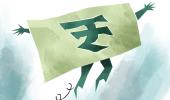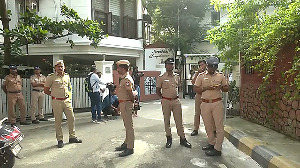India’s post-pandemic recovery appears to be shaping up like the letter K, widening the inequality among states.

The last part of the series captures the rising rural distress, as seen through the prism of MGNREGS demand.
The pandemic appears to have exacerbated rural distress in the poorest states.
The share of the poorest five in the work demanded under Mahatma Gandhi National Rural Employment Guarantee Scheme — an indicator of the economic health in rural areas — has increased, while the share of the richest five has declined.
If more people demand work under MGNREGS, it means fewer people have jobs or supplemental income.
A rise in the demand for work under the scheme shows rising economic distress.
Work demanded under the rural employment scheme increased for both the richest and poorest states during the pandemic, but the poorest five -- Odisha, Assam, Jharkhand, Uttar Pradesh and Bihar – showed an increase of 85.5 per cent year-on-year in 2020-21, which is more than twice the rate of increase in the riches five states of Karnataka, Haryana, Telangana, Gujarat, and Tamil Nadu.
The result has been an upending of the shares of the richest and poorest under MGNREGS.
The top five accounted for 29.3 per cent of the total work demanded in 2014-15, whereas the poorest five had a share of 15 per cent.
The situation had reversed by 2021-22: the share of the richest states had declined to 22.6 per cent, while the bottom five had 23.3 per cent.
This indicates an increasing economic disparity among the richest and poorest states, which had been widening even before the pandemic struck.
The agricultural income of the richest five states was growing at an average of 2.2 per cent in the decade leading to 2019-20, while the poorest averaged 1.5 per cent.
As incomes diverge further, the demand for work under the rural employment scheme is set to increase in the poorest states.
There are calls for an urban employment scheme on the lines of MGNREGS.
Business Standard had reported earlier that incomes in the richest states were rising faster than in the poorest ones, with the ratio of per capita income between the top five and bottom five increasing to 3.3 times in 2021-22.











